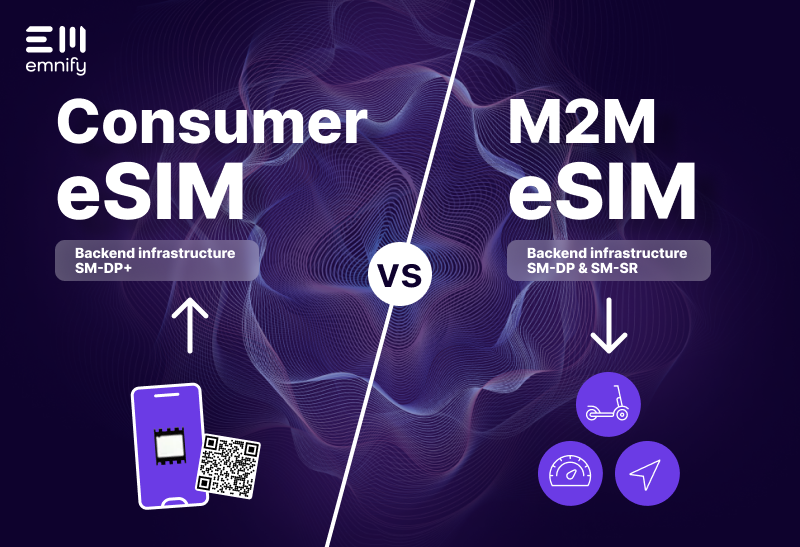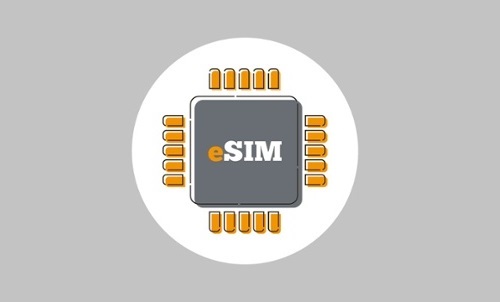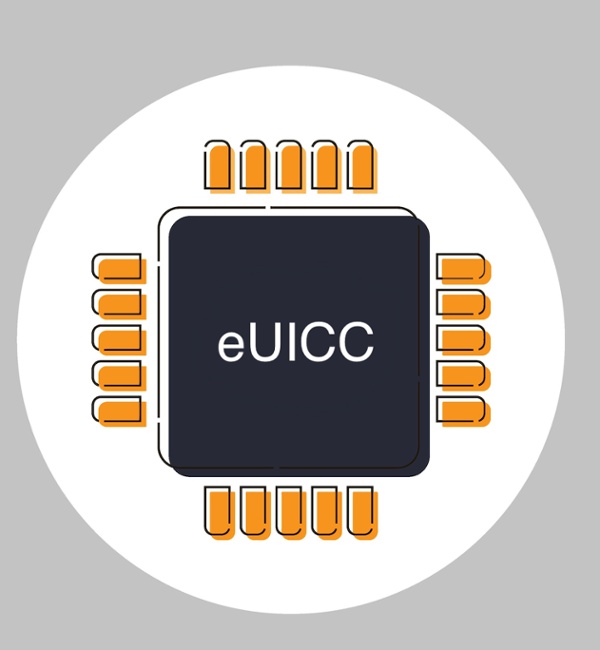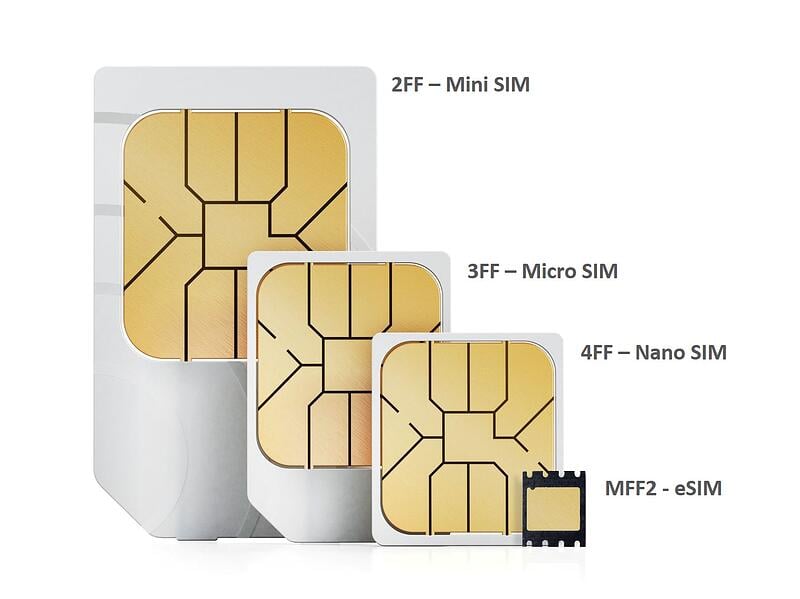

Referring to the new GSMA specifications for remote SIM provisioning, eSIM, also known as eUICC, enables over-the-air (OTA) download, storage, and update of multiple mobile operator profiles on a SIM card. As such, it eliminates the need to use and swap different SIM cards on a device over its lifecycle, easing supply chain processes while promising more flexibility and control over your device connectivity.
Yet, what many do not know is that there are two distinct eSIM camps – one intended for consumer applications and the other for IoT and M2M applications. As we can easily find Consumer eSIM in day-to-day life, typically with high-end phones, it’s easy to assume the technology works similarly for IoT devices. It does not. This is a huge pitfall if you are looking to adopt eSIM for your business.
In this blog post, we get down to the nitty-gritty of Consumer eSIM vs M2M eSIM to ensure you have all things considered when integrating eSIM into your IoT solution.
|
|
Consumer eSIM |
M2M eSIM |
|
Pros |
Easy profile selection and download via QR code No integration between different operator platforms needed |
No local human interaction needed Suitable for all device types, including resource-constrained IoT devices |
|
Cons |
Devices must conform to specific hardware requirements (LPA, user interface, camera) No scalable profile download and management |
Adding a different operator profile requires complex backed integration Migrating devices to a new service provider entails significant costs |
Targeted devices and use cases
There is a simple reason why GSMA defines two separate technical architectures for Consumer and IoT eSIM. They are intended for completely different endpoints and use cases.
Consumer eSIM:
Consumer eSIM is used on mobile phones, tablets, laptops, and other consumer devices with a user interface. The device “pulls” or downloads the profile from the subscription management (SM) backend based on user interaction on the UI - like scanning a QR code. For consumer devices like smartwatches or voice assistants, this action can be executed on a paired smartphone via Bluetooth.
Profile download and activation in Consumer eSIM is straightforward, but this needs to be done on every individual device without the possibility for bulk action. As such, it is a perfect fit for consumer applications where each user typically has one or two cellular-connected devices. The first download can also be done conveniently using Wi-Fi in the user’s vicinity.
M2M eSIM:
M2M eSIM is designed for IoT sensors, meters, trackers, and devices that often operate with no or minimal onsite human interaction and are, at times, resource-constrained. The profile is “pushed” to the device by a remote command from the subscription management platform. This enables mass profile management in IoT deployments with numerous geographically dispersed endpoints.
Many IoT devices are not conveniently located near a Wi-Fi network. Therefore, as opposed to its Consumer counterpart, M2M eSIM leverages a bootstrap cellular connection for the first profile download.
As you can see, Consumer eSIM requires a high level of local interaction and control by the end user, while IoT eSIM aims to serve M2M devices that need to be managed remotely.
Technical architecture
The different use cases dictate the different architectures that Consumer eSIM and M2M eSIM employ. While we don’t need to dive into all technical particulars, an overview of the key components can help to understand critical deployment considerations in both solutions.
Below is a quick outline of what involves in each variant.
Consumer eSIM:
- SM-DP+ (Data Preparation and Secure Routing): A backend component responsible for secure generation, storage, and delivery of eSIM profiles
- SM-DS (Discovery Server): An optional backend component that holds a list of ready-to-download profiles on the device
- LPA (Local Profile Assistant): A component embedded in the device for local download and status management of the profiles
M2M eSIM:
- SM-DP (Data Preparation): A backend component responsible for secure creation and storage of existing and new eSIM profiles
- SM-SR (Secure Routing): A backend component responsible for secure download and installation of the profiles on devices
Long story short, it boils down to two essential considerations:
First, Consumer eSIM requires an extra element on the device itself – the LPA, whereas in M2M eSIM, all profile management is handled in the backend. The LPA, in conjunction with SM-DS, allows for easy profile download at the push of a button without any complex integration required on the operator’s SM platform. Yet, it involves much more sophisticated hardware design and certification to ensure device compatibility.
Second, in M2M eSIM, the functions of data preparation and secure routing are separated into different components (SM-DP and SM-SR), while these are combined in one (SM-DP+) in Consumer eSIM. As such, with M2M eSIM, when you migrate to a new connectivity vendor, the management of existing devices and their cryptographic keys will also need to be transferred to the new SM-SR platform. This procedure, also known as SM-SR swap, is technically complex and comes with significant costs for both of the network providers and therefore also for the IoT business.
Conclusion
All in all, there is much more to eSIM than what meets the eyes. Now that you know the essential difference between the two eSIM variants, let’s explore the most common misunderstandings around this technology in the second part of this blog series.
Get in touch with our IoT experts
Discover how emnify can help you grow your business and talk to one of our IoT consultants today!

Nhu has over six years of experience working with networking technologies and IoT connectivity solutions. She’s an avid tech learner with a customer-focused mindset.


